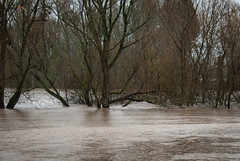10-9-18
By Rick Cooper

The Mt. Union Cemetery in Corvallis, Oregon, is the site of Oregon Sea Grant’s latest Quest, or clue-directed hunt. The Quest was created by Ginny Weeber of Bend and her granddaughter Kyah Weeber of Philomath, in partnership with Oregon Coast Quests and the Mt. Union Cemetery Association. (Photo by Cait Goodwin)
PHILOMATH, Ore. – A new self-guided, clue-driven walking tour near Philomath explores the history of a 157-year-old cemetery founded on land donated by a former slave.
The walk, which is part of Oregon Sea Grant’s Quests program, takes place on the 6.7-acre Mt. Union Cemetery where about 2,500 people are buried on a gently sloping hillside. The cemetery was created on May 11, 1861 – one month after the American Civil War started.
Reuben Shipley, who earned his freedom by driving his owner’s oxen from Missouri to Oregon in 1853, donated two acres of his farm to establish the cemetery on the condition that black people could be buried there. Shipley, his wife and six children were the only black family in Benton County at the time, according to the cemetery’s website.
Cait Goodwin, an educator with Oregon Sea Grant and the coordinator of its Quests program, said those who complete the walk will become more familiar with the site’s history and the story of Shipley and others who are buried there.

Cait Goodwin (in black jacket), an educator with Oregon Sea Grant, teaches people how to create self-guided, clue-directed walking tours – called Quests – that encourage participants to discover the natural, cultural or historical treasures of a place. (Photo by Vanessa Cholewczynski)
Goodwin also explained that Quests are self-guided learning adventures that use clues and hints to encourage participants to discover the natural, cultural and historical treasures of a place. At the end of each tour, participants find a hidden box containing a logbook to sign and a stamp to mark their accomplishment. Quests are suitable, she said, for individuals, families and groups of all ages who wish to explore parks, trails and other outdoor spaces at their own pace.
“Going on the Mt. Union Cemetery Quest provides an opportunity to explore the early contributions of persons of color in our community,” said Ann Bateman, a member of the cemetery’s board of trustees. “People who’ve taken the Quest say they want to go back and explore some more.”
The Quest can be found at bit.ly/mtunioncemeteryquest. It was created by Ginny Weeber of Redmond and her granddaughter Kyah Weeber of Philomath, in partnership with Oregon Sea Grant and the Mt. Union Cemetery Association. It is the third cemetery Quest in the program, joining one in Lincoln City and another in Newport. Participants will traverse grassy and gravel surfaces and need about 30 minutes to complete the walk.
The Mt. Union Cemetery Quest is slated to appear in the next edition of Oregon Sea Grant’s Oregon Coast Quests Book. To learn more about Quests and where to obtain the books, visit hmsc.oregonstate.edu/quests.
The cemetery is at 2987 Mt. Union Ave. just outside the eastern city limit of Philomath. It is open during daylight hours.







